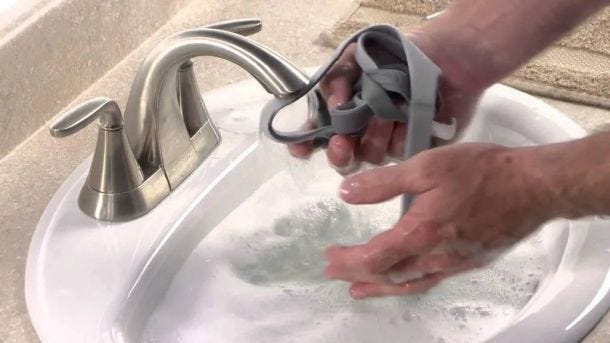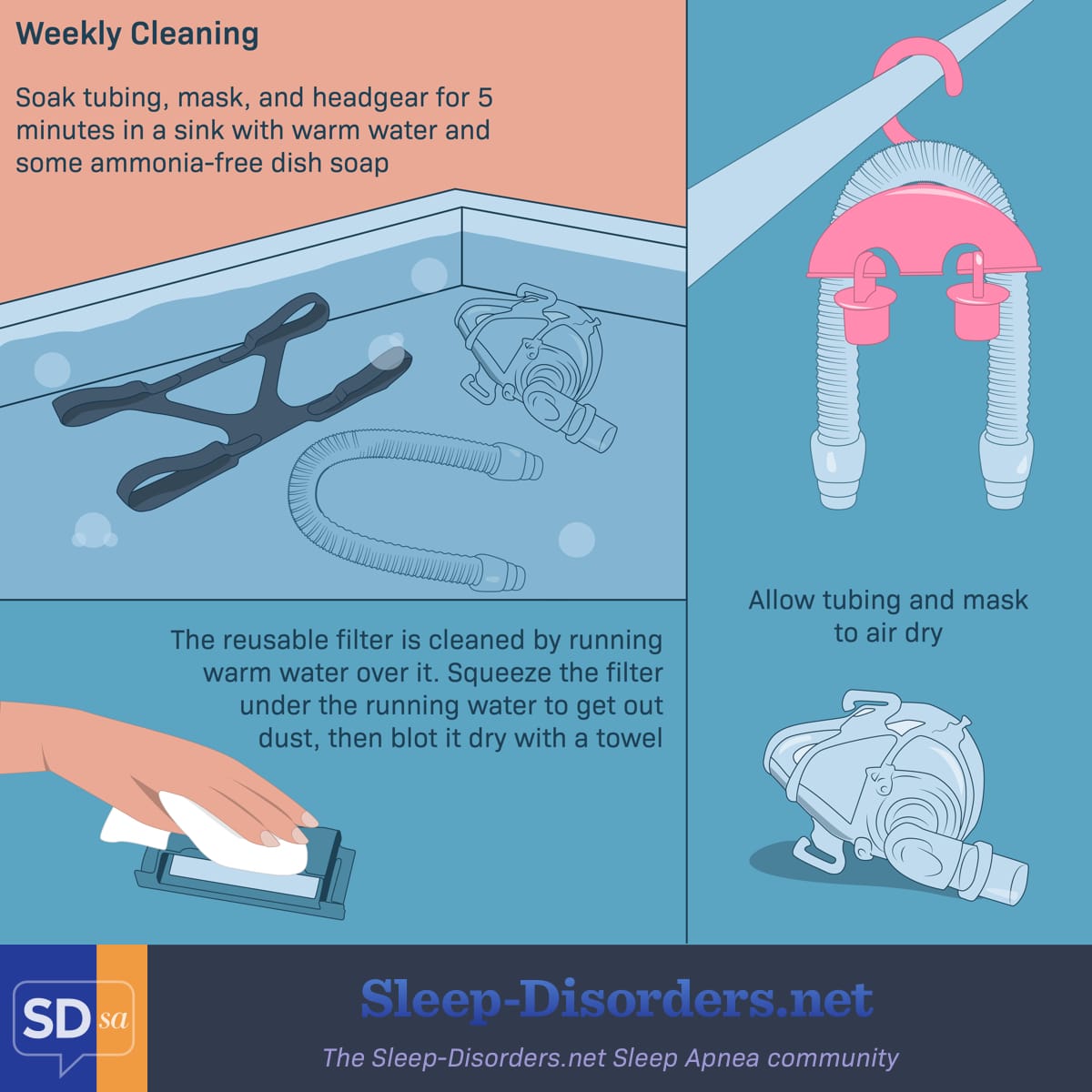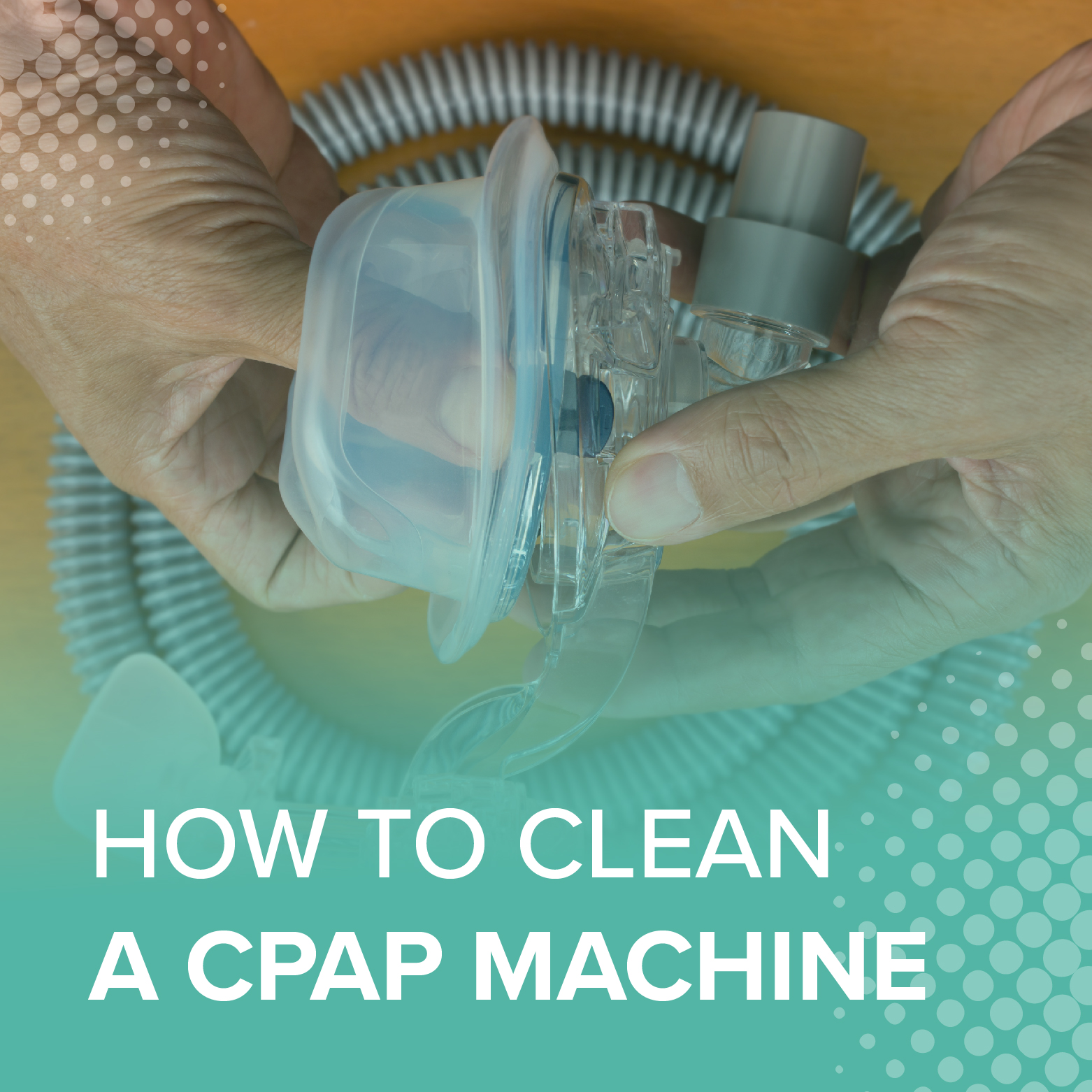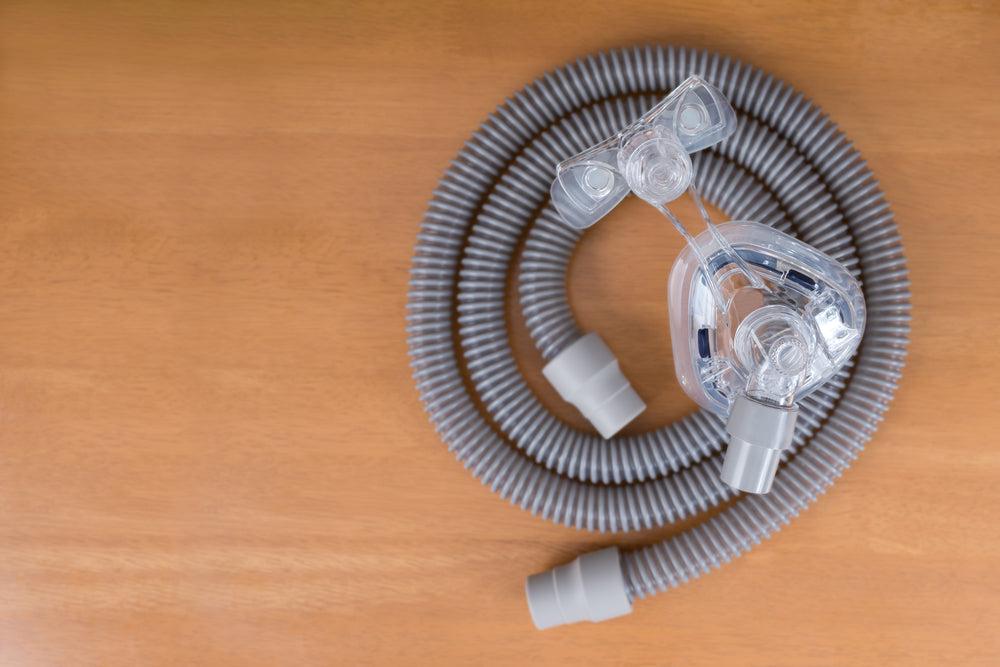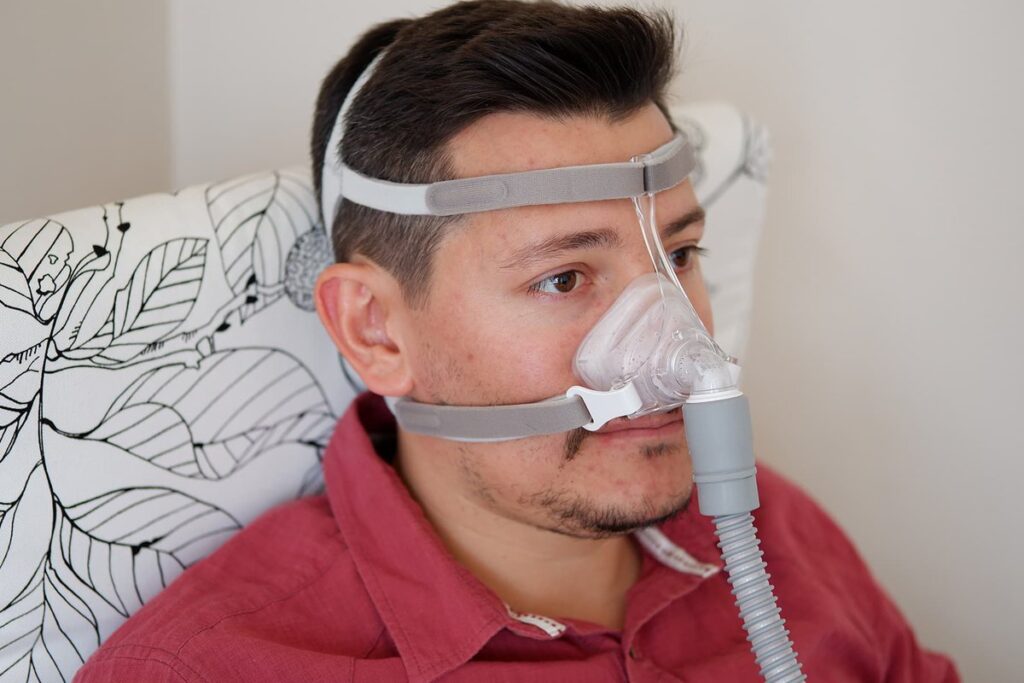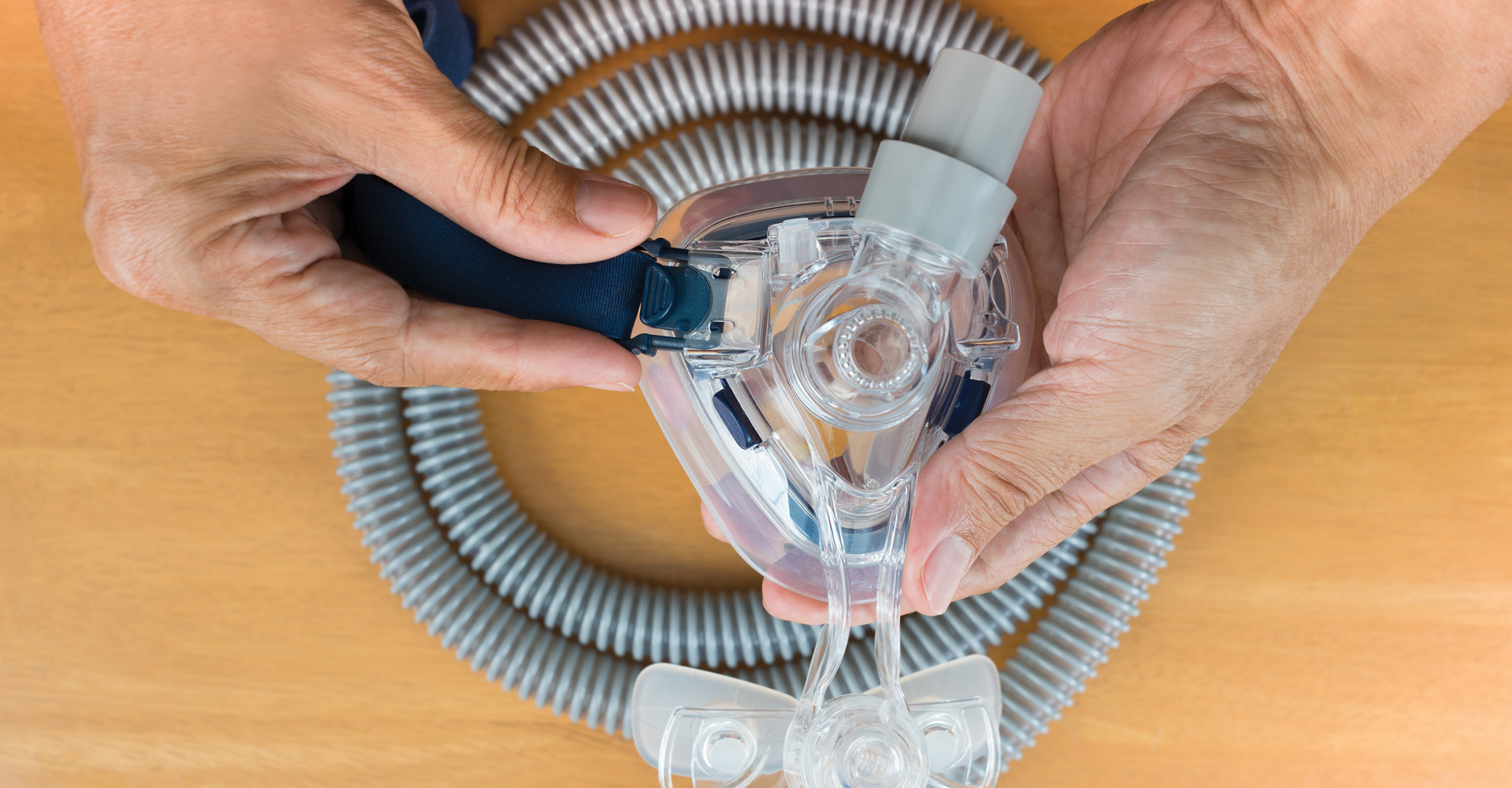How To Clean Cpap Hose And Mask

Imagine waking up refreshed, energized, ready to greet the day. No more groggy mornings, no more fighting the urge to doze off at your desk. For many, this dream becomes a reality thanks to their CPAP (Continuous Positive Airway Pressure) machine, a nightly companion battling sleep apnea. But this vital piece of equipment requires diligent care to maintain its effectiveness and ensure your well-being.
Keeping your CPAP hose and mask clean is crucial for both hygiene and optimal therapy. This article provides a comprehensive guide to cleaning your CPAP equipment, ensuring a healthier and more comfortable sleep experience.
The Importance of a Clean CPAP
A CPAP machine delivers pressurized air through a hose and mask, helping to keep your airways open during sleep. Over time, this equipment can become a breeding ground for bacteria, mold, and other microorganisms. Regular cleaning is not merely a matter of aesthetics; it's a matter of health.
According to the Centers for Disease Control and Prevention (CDC), respiratory equipment can harbor harmful pathogens if not properly maintained. These pathogens can lead to respiratory infections, allergic reactions, and even pneumonia. Moreover, a dirty CPAP mask can cause skin irritation and breakouts.
Beyond Health: Performance and Longevity
Besides the health benefits, cleaning your CPAP equipment enhances its performance and extends its lifespan. Dust and debris can accumulate in the hose and mask, reducing airflow and compromising the effectiveness of the therapy. A clean machine operates more efficiently, ensuring you receive the prescribed pressure needed for restful sleep.
Furthermore, regular cleaning prevents the breakdown of materials, especially the silicone in the mask. This preventative maintenance saves you money in the long run by delaying the need for replacements.
Step-by-Step Guide to Cleaning Your CPAP Hose and Mask
Cleaning your CPAP hose and mask doesn't have to be a chore. With a few simple steps and readily available supplies, you can maintain a clean and healthy CPAP system.
Daily Cleaning: A Quick Rinse
Ideally, you should rinse your CPAP mask every morning after use. This helps to remove facial oils and moisture that accumulate overnight. Disassemble the mask and rinse each part with warm, soapy water.
Use a mild dish soap, ensuring it's fragrance-free and hypoallergenic to avoid skin irritation. Rinse thoroughly with clean water, making sure to remove all traces of soap. Allow the mask to air dry completely on a clean towel before reassembling.
Weekly Cleaning: A More Thorough Approach
At least once a week, you should perform a more thorough cleaning of your CPAP hose and mask. This involves soaking the equipment in soapy water and paying extra attention to crevices and hard-to-reach areas.
Here's a detailed breakdown:
- Disassemble: Carefully disassemble your mask and hose, separating all removable parts.
- Soak: Fill a sink or basin with warm water and add a few drops of mild dish soap.
- Wash: Submerge the mask and hose in the soapy water and gently wash each part. Use a soft brush or cloth to scrub away any residue or buildup. Pay close attention to the mask cushions and the interior of the hose.
- Rinse: Rinse thoroughly with clean water until all traces of soap are gone.
- Disinfect (Optional): Some individuals choose to disinfect their equipment weekly. If you opt for this, use a CPAP-specific disinfectant solution or a mixture of white vinegar and water (1 part vinegar to 5 parts water). Soak for the recommended time, then rinse thoroughly.
- Air Dry: Hang the hose to dry, ensuring water drains completely. Place the mask components on a clean towel to air dry. Avoid direct sunlight, which can damage the materials.
- Reassemble: Once everything is completely dry, reassemble your mask and hose.
Cleaning the CPAP Machine
While this article focuses on the hose and mask, it's also important to maintain the CPAP machine itself. Refer to your machine's user manual for specific cleaning instructions.
Generally, you should wipe down the exterior of the machine with a damp cloth regularly. The water chamber should be emptied daily and cleaned weekly with soap and water, allowing it to air dry completely.
Tips and Best Practices
Here are some additional tips to ensure your CPAP cleaning routine is as effective as possible:
- Use Distilled Water: Always use distilled water in your CPAP humidifier to prevent mineral buildup.
- Replace Filters: Replace your CPAP filters regularly, as recommended by the manufacturer.
- Inspect for Damage: Regularly inspect your hose and mask for cracks, tears, or other signs of damage. Replace them as needed.
- Avoid Harsh Chemicals: Do not use bleach, alcohol, or other harsh chemicals to clean your CPAP equipment. These can damage the materials and irritate your skin.
- Consider a CPAP Sanitizer: If you're concerned about thorough disinfection, consider using a CPAP sanitizer. These devices use ozone or UV light to kill bacteria and mold. However, ensure that any sanitizer you choose is approved and used according to the manufacturer's instructions.
“Maintaining a clean CPAP machine is an integral part of ensuring optimal therapy and overall health,” emphasizes Dr. Emily Carter, a leading sleep specialist at the Sleep Wellness Institute. “Regular cleaning prevents the growth of harmful bacteria and ensures that patients receive the full benefits of their CPAP treatment.”
Addressing Common Concerns
Many people have questions about cleaning their CPAP equipment. Here are some answers to common concerns:
Q: How often should I replace my CPAP mask and hose? A: Generally, CPAP masks should be replaced every 3 to 6 months, and hoses should be replaced every 6 months. However, this can vary depending on usage and wear.
Q: Can I use a dishwasher to clean my CPAP equipment? A: Some CPAP masks and hoses are dishwasher-safe, but it's crucial to check the manufacturer's instructions. If dishwasher safe, use the top rack and avoid using harsh detergents.
Q: My CPAP hose has a lingering odor. How can I get rid of it? A: Soaking the hose in a solution of baking soda and water (1 tablespoon baking soda per quart of water) for 30 minutes can help to neutralize odors. Rinse thoroughly and air dry.
Embrace the Routine, Embrace the Rest
Cleaning your CPAP hose and mask may seem like a small task, but it has a significant impact on your health and well-being. By incorporating this simple routine into your daily life, you can ensure a cleaner, healthier, and more comfortable sleep experience.
Think of it not as a chore, but as an act of self-care – a commitment to prioritizing your health and ensuring you wake up feeling your best, ready to embrace all that the day has to offer. Sweet dreams and cleaner air!
